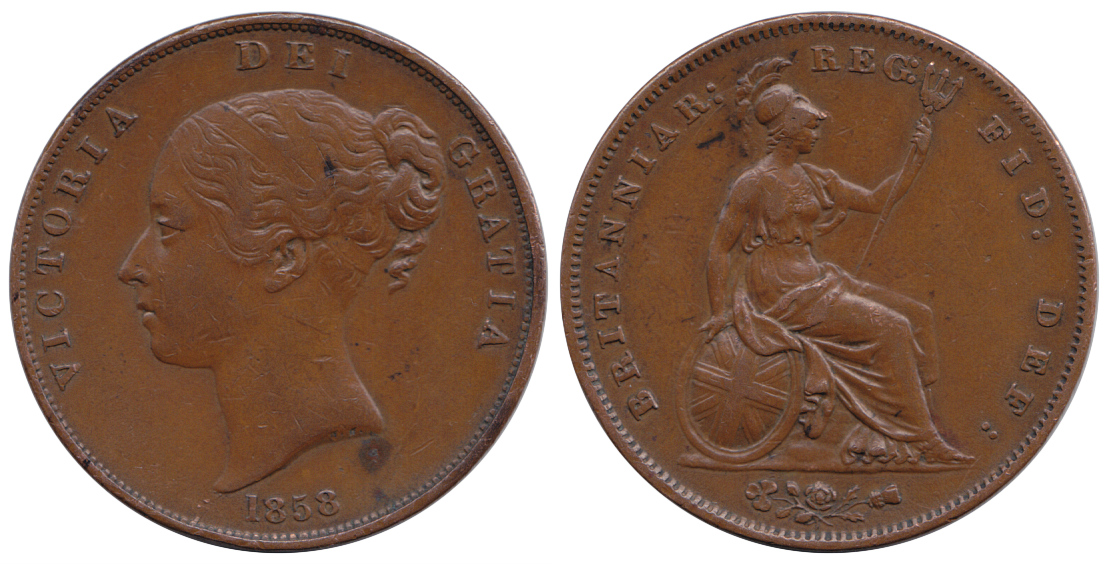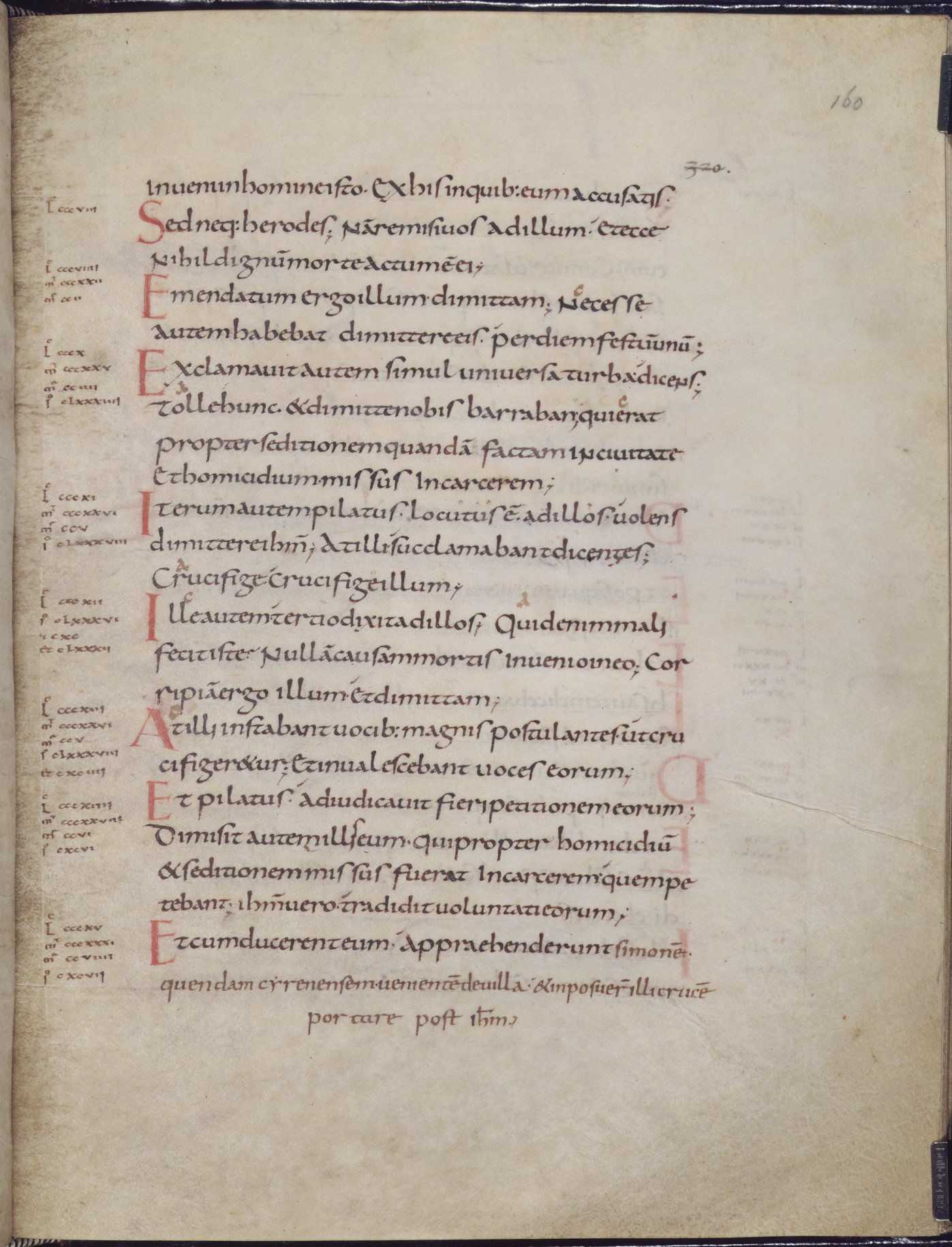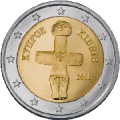|
Pennies
A penny is a coin ( pennies) or a unit of currency (pl. pence) in various countries. Borrowed from the Carolingian denarius (hence its former abbreviation d.), it is usually the smallest denomination within a currency system. Presently, it is the formal name of the British penny ( p) and the ''de facto'' name of the American one-cent coin (abbr. ¢) as well as the informal Irish designation of the 1 cent euro coin (abbr. c). It is the informal name of the cent unit of account in Canada, although one-cent coins are no longer minted there. The name is used in reference to various historical currencies, also derived from the Carolingian system, such as the French denier and the German pfennig. It may also be informally used to refer to any similar smallest-denomination coin, such as the euro cent or Chinese fen. The Carolingian penny was originally a 0.940-fine silver coin, weighing pound. It was adopted by Offa of Mercia and other English kings and remained t ... [...More Info...] [...Related Items...] OR: [Wikipedia] [Google] [Baidu] |
Penny (British Pre-decimal Coin)
The British pre-decimal penny was a denomination of sterling coinage worth of one pound or of one shilling. Its symbol was ''d'', from the Roman denarius. It was a continuation of the earlier English penny, and in Scotland it had the same monetary value as one pre-1707 Scottish shilling. The penny was originally minted in silver, but from the late 18th century it was minted in copper, and then after 1860 in bronze. The plural of "penny" is "pence" when referring to an amount of money, and "pennies" when referring to a number of coins. Thus 8''d'' is eight pence, but "eight pennies" means specifically eight individual penny coins. Before Decimal Day in 1971, sterling used the Carolingian monetary system (£sd), under which the largest unit was a pound (£) divisible into 20 shillings (s), each of 12 pence (d). The penny was withdrawn in 1971 due to decimalisation, and replaced (in effect) by the decimal half new penny, with p being worth 1.2''d''. History The kingdoms o ... [...More Info...] [...Related Items...] OR: [Wikipedia] [Google] [Baidu] |
Penny (Canadian Coin)
In Canada, a penny is a coin worth one cent, or of a dollar. According to the Royal Canadian Mint, the official national term for the coin is the "one-cent piece", but in practice the terms ''penny'' and ''cent'' predominate. ''Penny'' was likely readily adopted because the previous coinage in Canada (up to 1858) was the British monetary system, where Canada used British pounds, shillings, and pence as coinage alongside U.S. decimal coins and Spanish milled dollars. In Canadian French, the penny is often known by the loanword '' cent''; in contrast with the heteronymous word meaning "hundred" (), this keeps the English pronunciation . Slang terms include , , or (black penny), although common Quebec French usage is . Production of the penny ceased in May 2012, and the Royal Canadian Mint ceased distribution of them as of February 4, 2013. However, the coin remains legal tender. Nevertheless, once distribution of the coin ceased, vendors were no longer expected to return pe ... [...More Info...] [...Related Items...] OR: [Wikipedia] [Google] [Baidu] |
Offa Of Mercia
Offa (died 29 July 796 AD) was List of monarchs of Mercia, King of Mercia, a kingdom of History of Anglo-Saxon England, Anglo-Saxon England, from 757 until his death. The son of Thingfrith and a descendant of Eowa of Mercia, Eowa, Offa came to the throne after a period of civil war following the assassination of Æthelbald of Mercia, Æthelbald. Offa defeated the other claimant, Beornred of Mercia, Beornred. In the early years of Offa's reign, it is likely that he consolidated his control of Midland peoples such as the Hwicce and the Magonsæte. Taking advantage of instability in the kingdom of Kent to establish himself as overlord, Offa also controlled Kingdom of Sussex, Sussex by 771, though his authority did not remain unchallenged in either territory. In the 780s he extended Mercian Supremacy over most of southern England, allying with Beorhtric of Wessex, who married Offa's daughter Eadburh, and regained complete control of the southeast. He also became the overlord of King ... [...More Info...] [...Related Items...] OR: [Wikipedia] [Google] [Baidu] |
Penny (United States Coin)
The cent, the United States one-cent coin (symbol: ¢), often called the "penny", is a unit of currency equaling one one-hundredth of a United States dollar. It has been the lowest face-value physical unit of U.S. currency since the abolition of the half-cent in 1857 (the abstract mill, which has never been minted, equal to a tenth of a cent, continues to see limited use in the fields of taxation and finance). The first U.S. cent was produced in 1787, and the cent has been issued primarily as a copper or copper-plated coin throughout its history. The penny is issued in its current form as the Lincoln cent, with its obverse featuring the profile of President Abraham Lincoln since 1909, the centennial of his birth. From 1959 (the sesquicentennial of Lincoln's birth) to 2008, the reverse featured the Lincoln Memorial. Four different reverse designs in 2009 honored Lincoln's 200th birthday and a new, "permanent" reverse – the Union Shield – was introduced in 2010. The coin is ... [...More Info...] [...Related Items...] OR: [Wikipedia] [Google] [Baidu] |
Coin
A coin is a small, flat (usually depending on the country or value), round piece of metal or plastic used primarily as a medium of exchange or legal tender. They are standardized in weight, and produced in large quantities at a mint in order to facilitate trade. They are most often issued by a government. Coins often have images, numerals, or text on them. ''Obverse'' and its opposite, ''reverse'', refer to the two flat faces of coins and medals. In this usage, ''obverse'' means the front face of the object and ''reverse'' means the back face. The obverse of a coin is commonly called ''heads'', because it often depicts the head of a prominent person, and the reverse ''tails''. Coins are usually made of metal or an alloy, or sometimes of man-made materials. They are usually disc shaped. Coins, made of valuable metal, are stored in large quantities as bullion coins. Other coins are used as money in everyday transactions, circulating alongside banknotes. Usually the highest va ... [...More Info...] [...Related Items...] OR: [Wikipedia] [Google] [Baidu] |
Penny (Australian Coin)
The Australian penny was a coin of the Australian pound, which followed the £sd system. It was used in the Commonwealth of Australia prior to decimalisation in 1966. One Australian penny was worth Australian shilling, Australian florin, Australian crown, and Australian pound. The coin was equivalent in its dimensions and value to the British pre-decimal penny, as the two currencies were fixed at par. The coin was introduced in 1911, while the last penny was minted in 1964. After decimalisation on 14 February 1966 the penny was equal to 0.8333 cents. The obverse of the coin featured the reigning Australian monarch. Three were featured: George V, George VI and Elizabeth II. All of the pennies bearing George VI and Elizabeth II had a kangaroo on the reverse. The kangaroo image was on the Australian half penny and has since been included on the dollar coin and the bullion silver kangaroo. During the George VI era, coins minted at Perth had a dot either at the end of the ... [...More Info...] [...Related Items...] OR: [Wikipedia] [Google] [Baidu] |
Penny (British Decimal Coin)
The United Kingdom, British decimal one penny (1p) coin is a unit of currency and denomination of Coins of the United Kingdom, sterling coinage worth one-hundredth of one Pound sterling, pound. Its Obverse and reverse, obverse has featured the profile of Queen Elizabeth II since the coin's introduction on 15 February 1971, the day British currency was Decimal Day, decimalised. Four different portraits of the Queen have been used on the obverse; the latest design by Jody Clark was introduced in 2015. The second and current reverse, designed by Matthew Dent (designer), Matthew Dent, features a segment of the Royal coat of arms of the United Kingdom, Royal Shield and was introduced in 2008. The penny is the lowest value coin (in Real versus nominal value (economics), real terms) ever to circulate in the United Kingdom. The penny was originally minted from bronze, but since 1992 has been minted in Electroplating, copper-plated steel due to increasing copper prices. There are an est ... [...More Info...] [...Related Items...] OR: [Wikipedia] [Google] [Baidu] |
Carolingian Renaissance
The Carolingian Renaissance was the first of three medieval renaissances, a period of cultural activity in the Carolingian Empire. It occurred from the late 8th century to the 9th century, taking inspiration from the State church of the Roman Empire, Christian Roman Empire of the fourth century. During this period, there was an increase of literature, writing, visual arts, architecture, music, jurisprudence, liturgical reforms, and Religious text, scriptural studies. The movement occurred mostly during the reigns of Carolingian rulers Charlemagne and Louis the Pious. It was supported by the scholars of the Carolingian dynasty, Carolingian court, notably Alcuin, Alcuin of York. Charlemagne's ''Admonitio generalis'' (789) and ''De litteris colendis, Epistola de litteris colendis'' served as manifestos. The effects of this cultural revival were mostly limited to a small group of court ''intellectual, literati''. According to John Contreni, "it had a spectacular effect on education a ... [...More Info...] [...Related Items...] OR: [Wikipedia] [Google] [Baidu] |
Farthing (British Coin)
The British farthing (from Old English fēorðing, from fēorða, a fourth) abbreviated ''qua.'' (L. ''quadrans''), was a denomination of sterling coinage worth of one pound, of one shilling, or of one penny; initially minted in copper and then in bronze, which replaced the earlier English farthings. Before Decimal Day in 1971, Britain used the Carolingian monetary system, wherein the largest unit was a pound sterling of 20 shillings, each of 12 pence. Each penny was divided into 4 farthings, thus, a pound sterling contained 960 farthings, and a shilling contained 48 farthings. From 1860 to 1971, the purchasing power of a farthing ranged between 12p and 0.2p in 2017 values. The farthing coin was legal tender during the reigns of eleven British monarchs: George I, George II, and George III, George IV, William IV, and Victoria, Edward VII and George V, Edward VIII, George VI, and Elizabeth II. In Britain and Northern Ireland the farthing coin ceased to be legal tender on ... [...More Info...] [...Related Items...] OR: [Wikipedia] [Google] [Baidu] |
Euro Cent
There are eight euro coin denominations, ranging from one cent to two euros (the euro is divided into a hundred cents). The coins first came into use in 2002. They have a common Obverse and reverse, reverse, portraying a map of Europe, but each country in the eurozone has its own design on the Obverse and reverse, obverse, which means that each coin has a variety of different designs in circulation at once. Four European microstates that are not members of the European Union (Andorra, Monaco, San Marino, and the Vatican City) use the euro as their currency and also have the right to mint coins with their own designs on the obverse side. The coins, and various €2 commemorative coins, commemorative coins, are minted at numerous national mints across the European Union to strict national quotas. Obverse designs are chosen nationally, while the reverse and the currency as a whole is managed by the European Central Bank (ECB). History The euro came into existence on 1 January 1999. ... [...More Info...] [...Related Items...] OR: [Wikipedia] [Google] [Baidu] |
Unit Of Account
In economics, unit of account is one of the money functions. A unit of account is a standard numerical monetary unit of measurement of the market value of goods, services, and other transactions. Also known as a "measure" or "standard" of relative worth and deferred payment, a unit of account is a necessary prerequisite for the formulation of commercial agreements that involve debt. Money acts as a standard measure and a common denomination of trade. It is thus a basis for quoting and bargaining of prices. It is necessary for developing efficient accounting systems. Economics Unit of account in economics allows a somewhat meaningful interpretation of prices, costs, and profits, so that an entity can monitor its own performance. It allows shareholders to make sense of its past performance and have an idea of its future profitability. The use of money, as a relatively stable unit of measure, can tend to drive market economies toward efficiency. Historically, prices were often ... [...More Info...] [...Related Items...] OR: [Wikipedia] [Google] [Baidu] |
Base Metal
A base metal is a common and inexpensive metal, as opposed to a precious metal such as gold or silver. In numismatics, coins often derived their value from the precious metal content; however, base metals have also been used in coins in the past and today. Specific definitions In contrast to noble metals, base metals may be distinguished by oxidizing or corroding relatively easily and reacting variably with diluted hydrochloric acid (HCl) to form hydrogen. Examples include iron, nickel, lead and zinc. Copper is also considered a base metal because it oxidizes relatively easily, although it does not react with HCl. In mining and economics, the term base metals refers to industrial non-ferrous metals excluding precious metals. These include copper, lead, nickel and zinc. The U.S. Customs and Border Protection agency is more inclusive in its definition of commercial base metals. Its list includes—in addition to copper, lead, nickel, and zinc—the following metals: iron and st ... [...More Info...] [...Related Items...] OR: [Wikipedia] [Google] [Baidu] |
.jpg)



.jpg)


